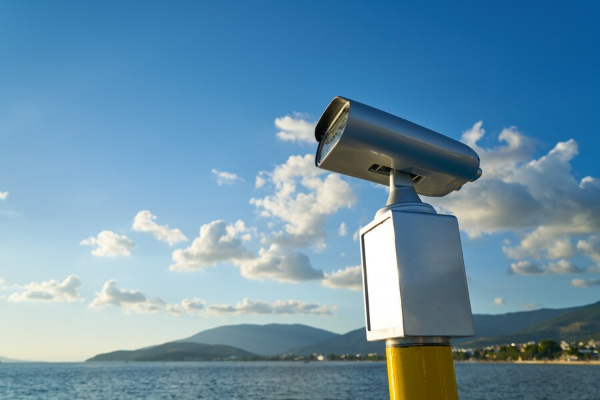
Why Is Your CCTV Footage Blurry or Lagging? Discover the Secrets Behind FPS and Resolution
Ever clicked on your CCTV footage only to be met with grainy images or jerky motion? You’re not alone. Many assume the culprit is a faulty camera or a poor internet connection—but in most cases, it all boils down to two essential settings: FPS (Frames Per Second) and Resolution.
These two factors are the unsung heroes of crisp, clear, and smooth video surveillance. Whether you're setting up a home system or managing business security, understanding them is key to getting the most out of your CCTV investment.
What Is FPS, and Why Does It Matter?
FPS, or Frames Per Second, is the number of still images your CCTV captures every second. The more frames per second, the smoother the video playback—especially when capturing fast movement.
| FPS Range |
Best For |
Description |
| 10–15 FPS |
Low-traffic areas |
Adequate for spaces like storage rooms. |
| 24–30 FPS |
General surveillance |
Delivers smooth, real-time video. Ideal for homes and offices. |
| 60+ FPS |
High-security zones |
Captures fast-moving actions in crystal clarity—perfect for banks, casinos, and public areas. |
What Is Resolution, and How Does It Improve CCTV Quality?
Resolution refers to the number of pixels in an image. More pixels = sharper images. This helps you see finer details like license plates or facial features.
| Resolution |
Pixels |
Suitable For |
| 720p (HD) |
1280x720 |
Basic home use |
| 1080p (Full HD) |
1920x1080 |
Sharp enough for most applications |
| 2K (QHD) |
2560x1440 |
Better clarity, ideal for small businesses |
| 4K (Ultra HD) |
3840x2160 |
Exceptional detail for large areas or professional-grade surveillance |
How FPS and Resolution Affect CCTV Performance
Here’s how these two specs can significantly influence the quality of your footage—and the performance of your entire system:
1. Motion Clarity
- High FPS reduces motion blur, especially in fast-moving scenes.
- High resolution enhances detail, helping identify people or read plates.
2. Storage Usage
- More FPS and higher resolution require more storage space.
- Optimize by using H.265 compression or expanding storage capacity.
3. Network Bandwidth
- Streaming 4K at 60 FPS? That’s a bandwidth-heavy task.
- Ensure your network supports it or adjust settings to avoid lag.
4. Accuracy in Motion Detection
- More frames = better detection accuracy for quick events like break-ins.
- Higher resolution allows you to zoom in without pixelation.
How to Choose the Right FPS & Resolution for Your Security Needs
| Use Case |
Recommended FPS |
Recommended Resolution |
| Home Security |
15-30 FPS |
720p or 1080p |
| Office Surveillance |
15-30 FPS |
1080p or 2K |
| Retail Stores |
24-30 FPS |
2K or 4K |
| Outdoor Areas |
30-60 FPS |
2K or 4K |
| High-Security Zones |
60+ FPS |
4K |
Conclusion
Don’t just chase high specs—optimize for your actual needs. A perfect CCTV setup is one that balances FPS, resolution, bandwidth, and storage, tailored to your space and security goals.
Want to enhance your CCTV system for sharper, smoother surveillance? Start by adjusting your FPS and resolution—the smallest changes can make the biggest difference.
Frequently Asked Questions (FAQ)
- 1. Why does my CCTV footage look blurry or laggy?
Blurry or lagging footage is often due to low FPS (Frames Per Second) or insufficient resolution—not necessarily because of a faulty camera or weak internet connection.
- 2. What is a good FPS setting for home security cameras?
Typically, 15–30 FPS is sufficient for most home security systems. It provides smooth motion capture without consuming excessive storage or bandwidth.
- 3. How does resolution affect video quality?
Higher resolution (like 1080p, 2K, or 4K) means more pixels, which results in clearer images. This helps when identifying faces, reading license plates, or zooming in on details.
- 4. Will higher FPS and resolution require more storage?
Yes. Both settings increase the amount of data being recorded. To manage this, consider using H.265 video compression or expanding your storage capacity.
- 5. How can I choose the right FPS and resolution for my needs?
It depends on your use case. For example:
- Home: 15–30 FPS, 720p or 1080p
- Retail: 24–30 FPS, 2K or 4K
- High-security zones: 60+ FPS, 4K
Balancing performance, storage, and bandwidth is key.
🔍 Recommended Reading
To get the most out of your CCTV system, check out these related guides:
👉 Best CCTV Camera Resolutions: 1080p, 4K, and 8K Explained
Discover the differences between HD, Full HD, and Ultra HD resolutions, and how to choose what’s best for your setup.
👉 What are the Components of a CCTV Camera?
Learn about the essential parts inside your camera that influence image quality, functionality, and overall performance.
